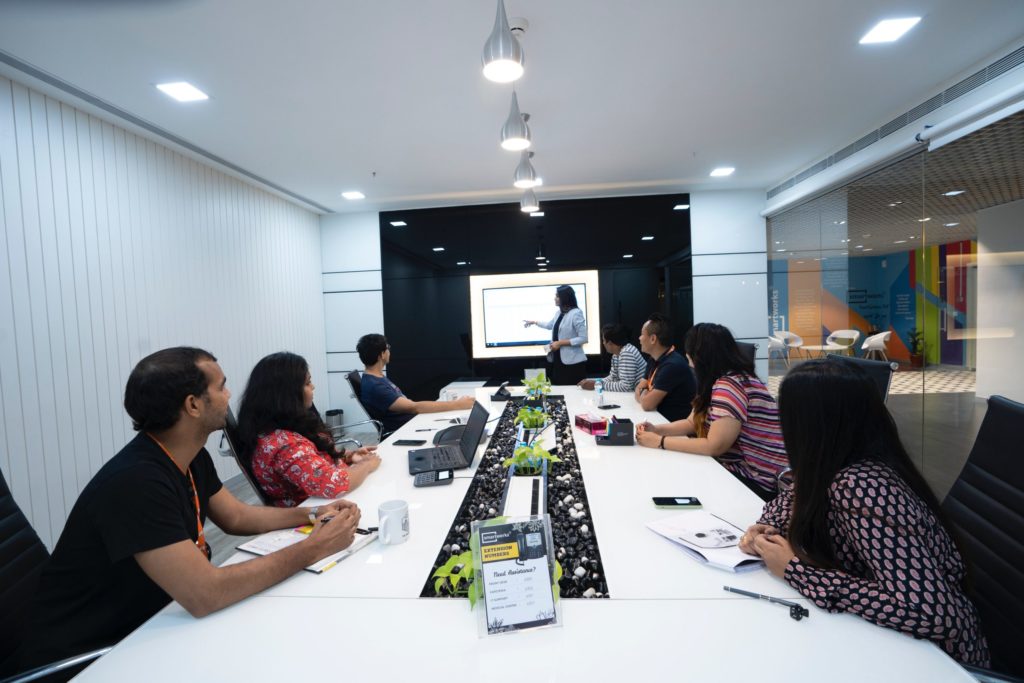Why do most innovation programs fail, and a better way!

“It doesn’t make sense to hire smart people and tell them what to do; we hire smart people so they can tell us what to do.”
Steve Jobs
How does your organization go about nurturing new ideas from employees? What percentage of ideas generated internally come to fruition in your company? The pace of business today is the fastest it has ever been. New technologies, rapidly shifting consumer preferences, and new market opportunities are defining the business world today. Fostering innovation is the surest way to maintain long-term advantage.
Most organizations already know the critical importance of innovation, but too often develop Innovation approaches that are doomed to fail.
Do any of these reflect your companies innovation approach:
“That’s a great idea, why don’t you:
- Open a ticket”
- Discuss it with your manager”
- Bring that to the innovation committee”
- Build a presentation to present to the executive committee”
I have seen all of these way too many times. I have even advocated for similar in the past. Unfortunately, none of these approaches work. But why?
A quote from Theodore Levitt says it well:
“Creativity is thinking up new things to do, Innovation is doing new things”.
Theodore Levitt
These approaches don’t enable your team to actually DO something new. There is always a gatekeeper or final decision maker before anything can be tried.
The result as are often expressed by the employees:
- Too few ideas implemented
- Limited visibility into how projects are picked
- More time spent discussing ideas than experimenting
- Disconnect between those with the ideas/pain and those implementing (lack of ownership)
- All of the above leads to employees that feel disincentives to continue to share their ideas
There is a better way. A way of allowing your stuff to solve their own problems. How? Enter Citizen Development!
Citizen Development
Citizen development is a concept that provides tools to your business users (non-IT) that allows them to directly build their ideas.
No gatekeeper, no interpretation of the need, no committee debating. Just immediate action by your own team to solve their own problems!
What are your department’s biggest current problems? Are they things IT is always too busy to resolve? Imagine instead if your team could create their own solutions for them, and often in as little as a few weeks!
This has been a dream for as long as I have been in IT, but it’s taken a rise in technically savvy employees, and software tools designed for use by non-developers to make this possible.
Benefits of Citizen Development in Your Organization
Citizen development allows those employees who are living the pain, to directly build solutions. Traditional development involves significant time spent documenting and confirming requirements. With Citizen Development, build begins immediately. If you’re familiar with the idea of Fail Fast, this is where it happens!
Second, since your department will be directly responsible for what gets prioritized, there is immediate clarity upon what items get built and why.
My personal favorite benefit is it opens new career opportunities for your high potential employees. Starting with employees who currently are task focused, and often have limited ability to impact a company, and empowering them to become drivers of real change in an organization is amazingly rewarding, to them and the organization.
Since this article is about Innovation, I need to bring us back there and to the biggest result. The ideas from your staff will begin pouring in. When your team sees their ideas get acted upon, the investment in innovation and participation will explode.
Controls (Risks)
Whereas encouraging citizen development is critical in fostering a culture of problem solving, it is not the right solution for all problems, and can even increase risks. That is why certain things must be put in place from the start.
First, your IT department must be your partner. They are experts at keeping your systems safe, and this is just the next layer of systems. Without their oversight (it can be very light) the risk to your company can be significant.
Similarly, you need to ensure guardrails are in place. Does this solution have high risk? Is it applicable to other departments? Are there integrations or secondary technologies that are beyond your Citizen developers team?
These are a few of the questions that need to be considered for any citizen development project being considered, and there needs to be clearity upon what steps to take if the answers are yes. This should not be confused with gatekeeping, but rather mitigate risk.
As citizen development takes root in your organization, there will be an initial dropoff in productivity as some of your team take on new roles. Our experience shows that this loss of productivity will quickly be offset by company wide increase in efficiency. However, planning for that short term dip is required.
Be the change your company needs
Enabling your team to participate in solution building has amazing value, but without proper oversight, the potential for great risk as well. DT Group is here to help you supercharge your employee’s ideas, while also ensuring guardrails are in place to protect your organization.
If your ready to supercharge innovation in your organization, or just want to learn more, feel free to contact me at john@dtgroup.io
Similar Posts
Intro: Citizen Development and why it matters
An introduction to Citizen Development and why so many companies need to consider adopting a Citizen Development program.
Insurance Processes to Automate:
9 Places to Begin, Plus 3 Often-Missed Bonuses Within the realm of automation, you have countless options for where your organization can…
How to retain your best employees during the Great Resignation
The Great Resignation is here. You’ve likely heard this term being kicked around. After 18+ months of high unemployment, remote working, transition…





